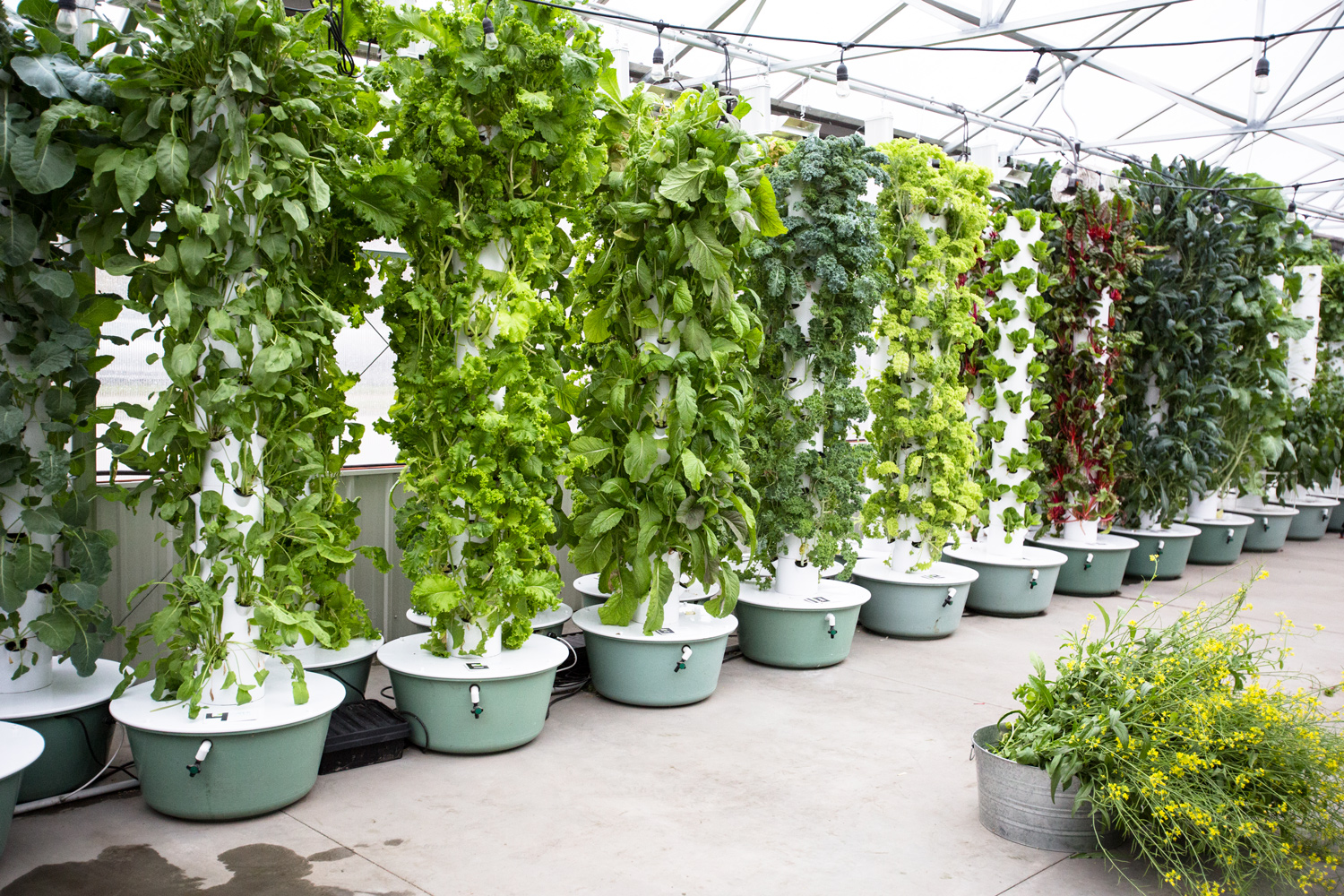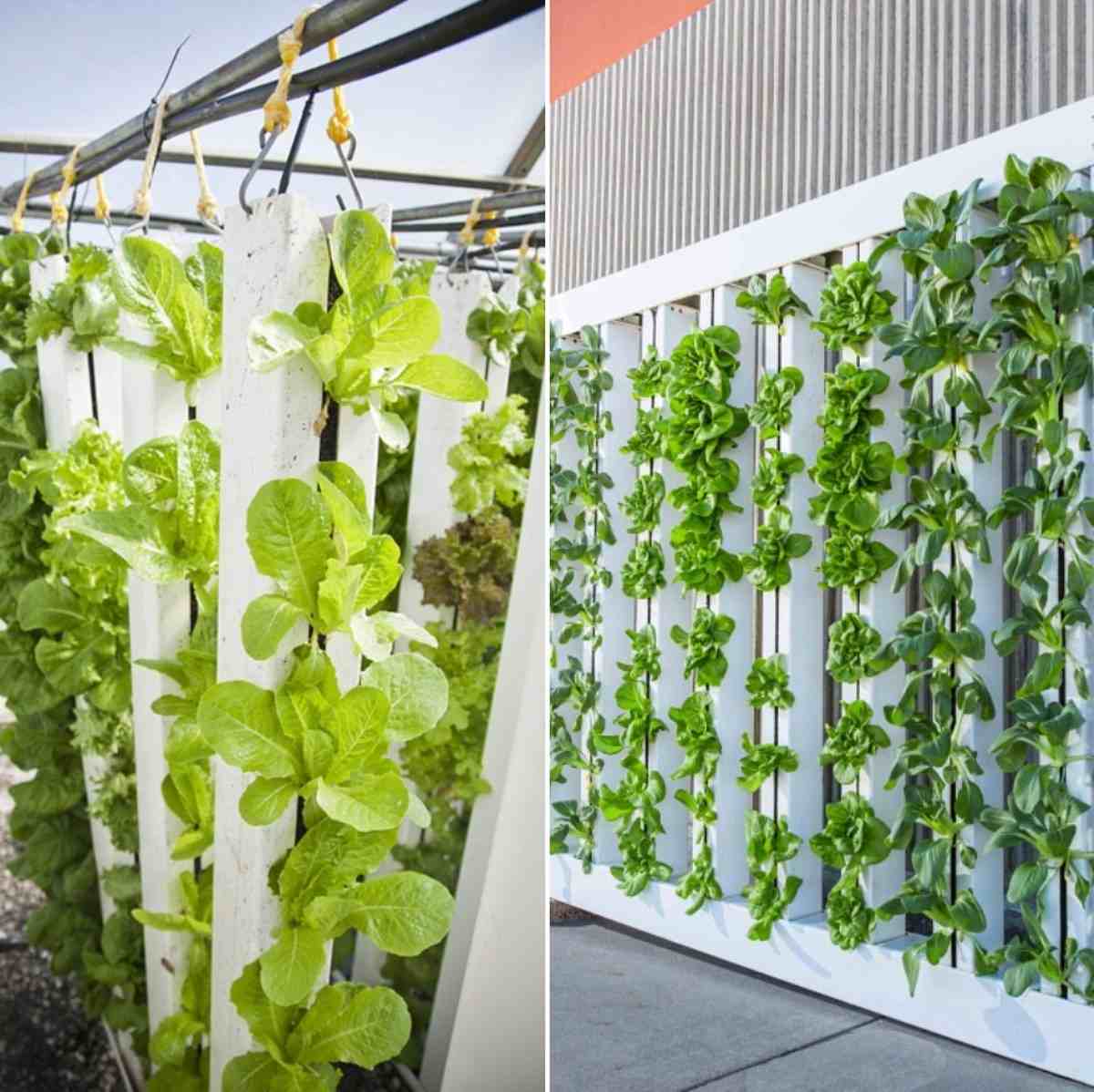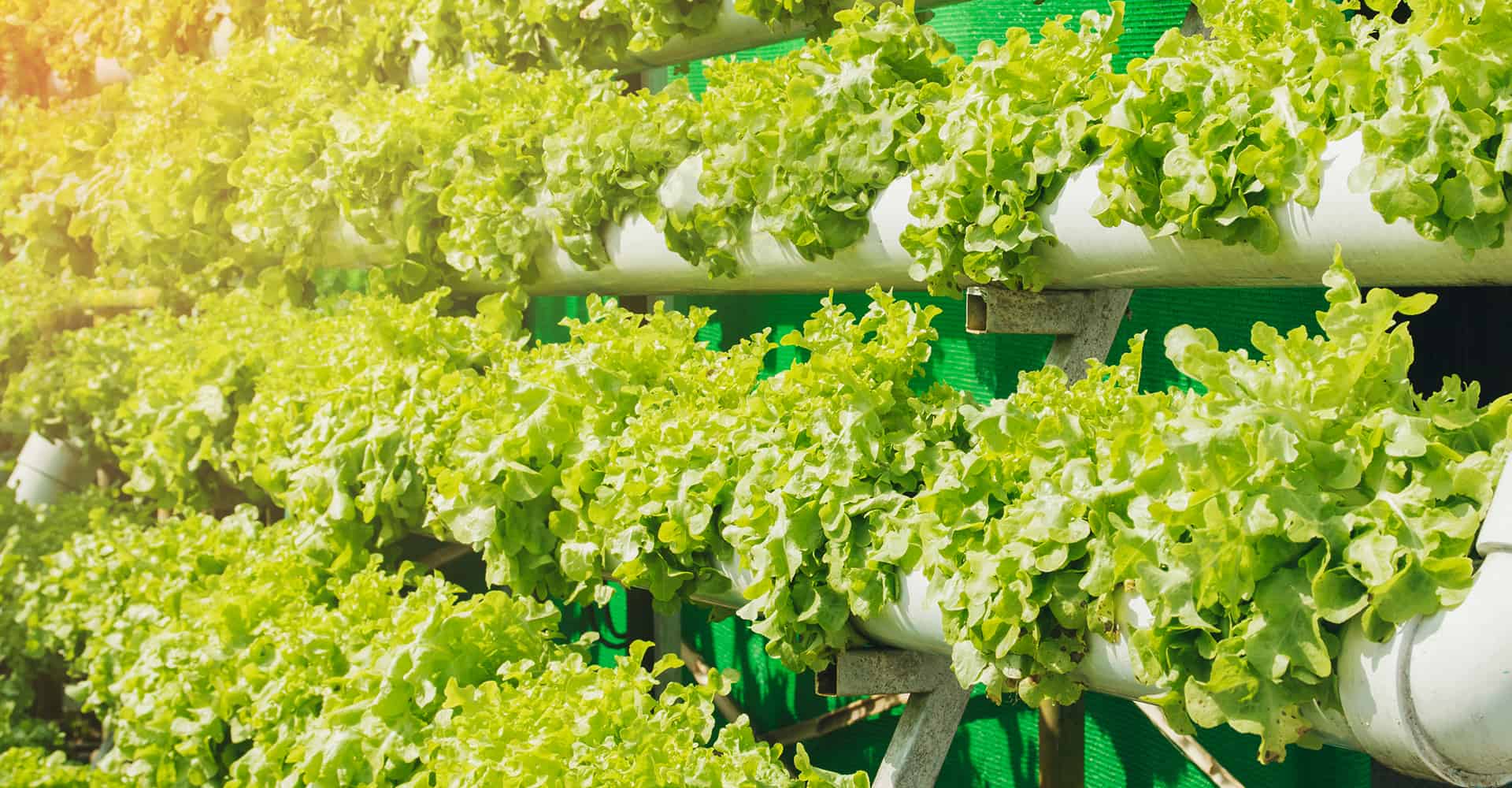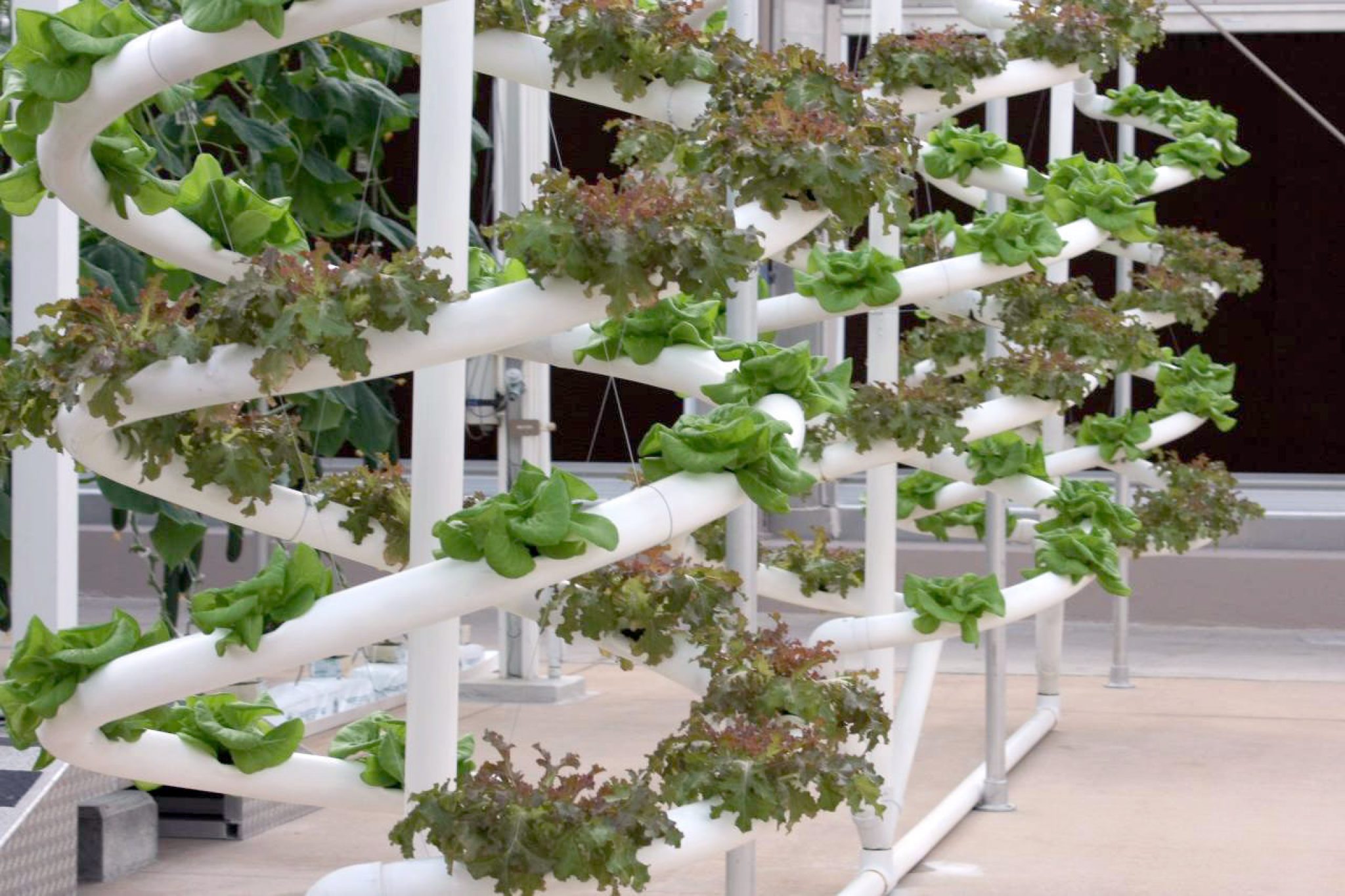Vertical hydroponic systems offer a unique and innovative approach to growing plants, allowing you to maximize space and resources while enjoying the benefits of hydroponics. This comprehensive guide will provide you with everything you need to know about vertical hydroponic systems, from the basics to advanced techniques.
In this guide, we will explore the concept and principles of vertical hydroponics, discuss the advantages and disadvantages compared to traditional hydroponics, and provide a detailed diagram of a vertical hydroponic system. We will also cover essential components and their functions, factors to consider when designing a system, and suitable plant species for vertical hydroponics.
Vertical Hydroponic System
Vertical hydroponics is a type of hydroponic system that grows plants vertically in a stacked or layered arrangement. It involves growing plants in nutrient-rich water without soil, utilizing vertical space to maximize production in limited areas.
Vertical hydroponics operates on the principles of hydroponics, where plants receive nutrients dissolved in water rather than from soil. This system provides precise control over nutrient delivery, water usage, and environmental conditions, optimizing plant growth and yield.
Advantages of Vertical Hydroponics
- Increased space utilization:Vertical hydroponics maximizes vertical space, allowing for higher plant density and increased production in limited areas.
- Improved environmental control:Vertical systems offer greater control over environmental factors such as light, temperature, and humidity, resulting in optimal growing conditions.
- Water and nutrient efficiency:Hydroponic systems conserve water and nutrients by recirculating and reusing the nutrient solution, reducing waste and promoting sustainable practices.
- Reduced labor costs:Automated systems and vertical arrangements minimize labor requirements for tasks like watering, fertilization, and harvesting.
Disadvantages of Vertical Hydroponics
- Higher initial investment:Vertical hydroponic systems can require a significant initial investment in equipment and infrastructure compared to traditional hydroponics.
- Technical expertise:Operating vertical hydroponic systems requires technical knowledge and expertise in hydroponics, nutrient management, and environmental control.
- Power dependency:Vertical systems rely on electricity for pumps, lighting, and environmental control, making them vulnerable to power outages.
System Design and Components

Vertical hydroponic systems are designed to maximize space utilization and increase plant productivity. Understanding the system’s components and design principles is crucial for successful implementation.
A typical vertical hydroponic system consists of the following essential components:
Vertical Structure
- The vertical structure provides support for the plants and the growing medium.
- It can be made from various materials, such as PVC pipes, metal frames, or wooden beams.
- The height and width of the structure depend on the space available and the number of plants to be grown.
Growing Medium
- The growing medium provides support and nutrients for the plant roots.
- Commonly used media include rockwool, coco coir, and perlite.
- The choice of growing medium depends on factors such as plant species, nutrient requirements, and desired growth rate.
Nutrient Solution
- The nutrient solution provides essential nutrients for plant growth.
- It is typically composed of water, fertilizers, and pH adjusters.
- The nutrient solution is circulated through the system to deliver nutrients to the plant roots.
Water Pump
- The water pump circulates the nutrient solution through the system.
- It is responsible for maintaining the flow of water and nutrients to the plants.
- The pump’s capacity should be sufficient to meet the water and nutrient demands of the plants.
Lighting
- Lighting is essential for photosynthesis and plant growth.
- Artificial lighting, such as LED grow lights, is typically used in vertical hydroponic systems.
- The type and intensity of lighting depend on the plant species and the desired growth rate.
Monitoring and Control Systems
- Monitoring and control systems are used to maintain optimal growing conditions.
- They can monitor factors such as pH, nutrient concentration, and temperature.
- Based on the monitoring data, the system can automatically adjust parameters to ensure optimal plant growth.
Plant Selection and Growing Techniques

Vertical hydroponics offers a controlled environment for plant cultivation, enabling optimal growth and yield. Selecting suitable plant species and implementing specific growing techniques are crucial for success in vertical hydroponic systems.
Vertical hydroponic systems are a great way to grow plants in a small space. They are especially well-suited for growing herbs and leafy greens. If you are interested in learning more about vertical hydroponic systems, be sure to attend the upcoming hydroponics expo . The expo will feature a variety of vendors and experts who can help you get started with vertical hydroponics.
You will also be able to see the latest in vertical hydroponic technology.
Plant Selection
- Choose plants that thrive in hydroponic conditions, such as leafy greens (e.g., lettuce, spinach), herbs (e.g., basil, mint), and certain fruits (e.g., strawberries, tomatoes).
- Consider the space availability and growth habit of the plants. Choose varieties that are compact and can be grown vertically, such as dwarf or bush varieties.
- Select plants that are resistant to pests and diseases, reducing the need for chemical treatments.
Growing Techniques
In vertical hydroponics, plants are grown in a nutrient-rich water solution rather than soil. Specific growing techniques are employed to ensure optimal plant growth and yield.
Nutrient Management
- Provide a balanced nutrient solution containing essential elements like nitrogen, phosphorus, potassium, and micronutrients.
- Monitor and adjust the pH and electrical conductivity (EC) of the nutrient solution regularly to ensure optimal nutrient uptake.
- Implement fertigation systems to deliver nutrients directly to the plant roots, minimizing waste and maximizing absorption.
Lighting
- Provide adequate lighting to support photosynthesis. Use LED grow lights or natural sunlight if possible.
- Consider the light intensity, duration, and spectrum required for the specific plant species.
- Use reflective materials to maximize light distribution and minimize energy loss.
Other Techniques
- Maintain optimal temperature and humidity levels for plant growth.
- Monitor and control pests and diseases through biological or organic methods.
- Provide support systems, such as trellises or stakes, to support plant growth and prevent overcrowding.
Tips for Maximizing Plant Growth and Yield
- Start with healthy seedlings or cuttings.
- Monitor plant growth regularly and adjust growing conditions as needed.
- Use high-quality nutrient solutions and growing media.
- Prune plants to promote air circulation and prevent disease.
- Harvest plants at the appropriate time to maximize yield and quality.
Water Management and Circulation

Water management is crucial in vertical hydroponic systems to ensure optimal plant growth and productivity. The water circulation system consists of a pump, reservoir, and network of pipes that deliver nutrient-rich water to the plant roots.
Water Quality and Monitoring
Water quality plays a vital role in plant health. Regular monitoring of pH, electrical conductivity (EC), and nutrient levels is essential to maintain the optimal conditions for plant growth. pH levels should be between 5.5 and 6.5, while EC should be adjusted based on the plant species and growth stage.
Methods for Controlling pH, EC, and Nutrient Levels
- pH Control:pH can be adjusted using acids (e.g., nitric acid) or bases (e.g., potassium hydroxide) as needed.
- EC Control:EC can be increased by adding nutrients or decreased by diluting the nutrient solution with water.
- Nutrient Management:Nutrient levels can be adjusted by adding specific nutrients or using pre-mixed nutrient solutions. Monitoring and adjusting nutrient levels is crucial for optimal plant growth and yield.
Lighting Requirements
Lighting plays a pivotal role in vertical hydroponics, as it mimics natural sunlight, providing the energy necessary for photosynthesis and plant growth.
Various types of lighting systems are available, each with its advantages and disadvantages. The choice depends on factors such as the plant species, growth stage, and budget.
Types of Lighting Systems, Vertical hydroponic system
- Fluorescent lights: Energy-efficient and cost-effective, suitable for small-scale systems and vegetative growth.
- High-intensity discharge (HID) lights: Emit intense light, suitable for large-scale systems and flowering plants. Types include metal halide (MH) and high-pressure sodium (HPS) lamps.
- LED lights: Highly efficient and customizable, providing precise light wavelengths for specific plant needs. However, they can be more expensive than other options.
Determining Optimal Lighting Intensity and Duration
The optimal lighting intensity and duration depend on the plant species and growth stage. As a general guideline:
- Intensity: Seedlings and vegetative growth require 10,000-15,000 lux, while flowering plants need 20,000-25,000 lux.
- Duration: Most plants require 12-18 hours of light per day during the vegetative stage, and 10-12 hours during the flowering stage.
Environmental Control
Environmental control is crucial in vertical hydroponic systems to ensure optimal plant growth and yield. It involves regulating factors such as temperature, humidity, and air circulation to create a suitable environment for plant development.
Temperature Control
- Plants thrive within a specific temperature range. Controlling temperature is essential to prevent heat stress or chilling injury.
- Heaters can be used to raise temperatures, while cooling systems (e.g., fans, evaporative coolers) can lower them.
- Monitoring temperature regularly using sensors is vital to make necessary adjustments.
Humidity Control
- Humidity levels influence plant growth and disease resistance. Excessive humidity can promote disease, while low humidity can lead to water loss.
- Humidifiers can be used to increase humidity, while dehumidifiers can reduce it.
- Maintaining optimal humidity levels is crucial for plant health and preventing moisture-related issues.
Air Circulation
- Adequate air circulation prevents stagnant air, which can lead to disease and poor plant growth.
- Fans or blowers can be used to circulate air within the system.
- Good air circulation also helps remove excess moisture and prevents the buildup of harmful gases.
Pests and Diseases

Vertical hydroponic systems are not immune to pests and diseases. In fact, the close proximity of plants in these systems can create an ideal environment for pests and diseases to spread. Therefore, it is important to be aware of the common pests and diseases that affect vertical hydroponic systems and to take steps to prevent and control them.
The most common pests that affect vertical hydroponic systems include aphids, thrips, spider mites, and whiteflies. These pests can feed on plant leaves, stems, and flowers, causing damage to the plants and reducing yields. The most common diseases that affect vertical hydroponic systems include powdery mildew, downy mildew, and botrytis.
These diseases can cause leaves to turn yellow and wilt, and they can also lead to fruit rot.
Prevention and Control Measures
There are a number of things that can be done to prevent and control pests and diseases in vertical hydroponic systems. These include:
- Using clean water and growing media
- Inspecting plants regularly for signs of pests and diseases
- Using beneficial insects to control pests
- Using fungicides and pesticides to control diseases
- Maintaining a clean and sanitary growing environment
Maintaining a Healthy and Disease-Free Growing Environment
In addition to the prevention and control measures listed above, there are a number of things that can be done to maintain a healthy and disease-free growing environment in vertical hydroponic systems. These include:
- Providing adequate light and ventilation
- Maintaining the correct pH and nutrient levels
- Monitoring the temperature and humidity levels
- Cleaning and disinfecting the system regularly
By following these tips, you can help to prevent and control pests and diseases in your vertical hydroponic system and ensure that your plants grow healthy and strong.
Automation and Monitoring

Automating a vertical hydroponic system offers numerous advantages, including:
- Reduced labor costs:Automation eliminates the need for manual tasks such as monitoring water levels, adjusting pH, and controlling lighting.
- Improved system efficiency:Automation ensures that the system operates at optimal conditions, reducing water and nutrient waste.
- Enhanced plant growth:Automation provides consistent environmental conditions, leading to improved plant growth and yields.
Sensors and Control Systems
Various sensors and control systems are available for automating vertical hydroponic systems:
- Water level sensors:Monitor water levels in the system and trigger alerts or adjust pumps accordingly.
- pH sensors:Measure the pH of the nutrient solution and adjust it automatically using pH controllers.
- EC sensors:Measure the electrical conductivity of the nutrient solution, indicating nutrient concentration, and adjust nutrient levels as needed.
- Light sensors:Monitor light intensity and adjust lighting schedules to provide optimal light conditions for plants.
- Temperature sensors:Monitor temperature levels and trigger cooling or heating systems to maintain desired temperatures.
Data Logging and Analysis
Data logging and analysis are crucial for optimizing system performance:
- Data collection:Sensors collect data on various parameters, such as water levels, pH, temperature, and light intensity.
- Data analysis:Collected data is analyzed to identify trends, detect anomalies, and optimize system settings.
- Performance optimization:Analysis results guide adjustments to system parameters, such as nutrient levels, lighting schedules, and temperature control, to enhance plant growth and yields.
Summary
Whether you’re a beginner or an experienced grower, this guide will provide you with the knowledge and tools you need to successfully implement a vertical hydroponic system. By following the principles and techniques Artikeld in this guide, you can enjoy the benefits of growing healthy, productive plants in a space-efficient and sustainable way.
General Inquiries
What are the advantages of vertical hydroponic systems?
Vertical hydroponic systems offer several advantages over traditional hydroponics, including increased space utilization, reduced water consumption, improved plant growth and yield, and ease of maintenance.
What are the disadvantages of vertical hydroponic systems?
Vertical hydroponic systems can be more expensive to set up and maintain than traditional hydroponics, and they require careful monitoring and control of water quality, pH, and nutrient levels.
What types of plants are suitable for vertical hydroponic systems?
A wide variety of plants can be grown in vertical hydroponic systems, including leafy greens, herbs, tomatoes, peppers, and strawberries.
